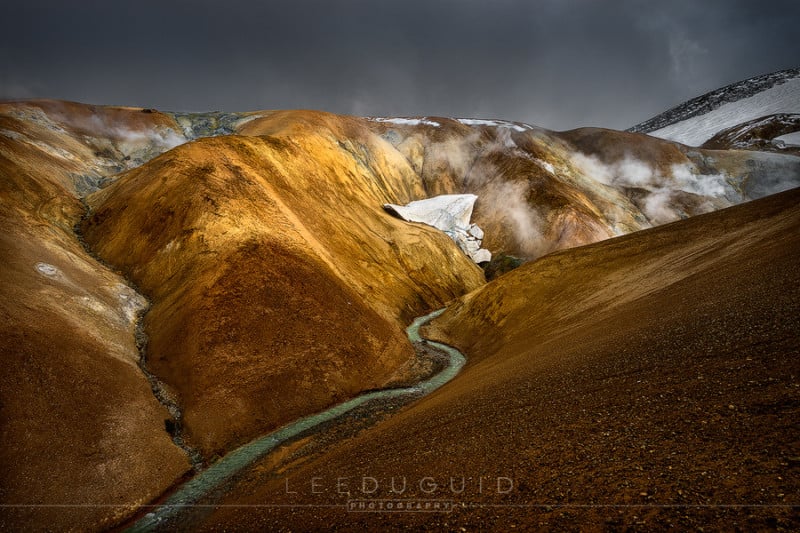Filters, Do We Still Need Them?
![]()
With the advent of better camera technology and clever processing software, do we really need neutral density filters any more? Can’t we just replicate the effect of filters in Photoshop or even in camera? Isn’t the dynamic range sufficient in my shiny new Sony camera? Well, yes and no…
Graduated Neutral Density Filters
I used to shoot with graduated ND filters religiously for many years. There wasn’t a shot I would take without strapping two Graduated ND filters to the front of the lens. Now, with my light weight setup and high dynamic range camera (Sony A7r) and improved Photoshop skills is there still a need for ND filters?
Well yes, but not like before.
Now I leave the graduated ND’s at home preferring to capture everything in one or two frames. The Sony A7r allows me to expose for the highlights in a scene and then rescue the shadows in post processing. For the most part this is sufficient and I can capture the entire dynamic range of a scene in a single shot. For anything else I prefer to capture multiple exposures and blend them in post.
This gives me less gear to carry, less complexity in the field, and an optically better image (very subtly presuming your filters are clean, neutral in colour and scratch free).
![]()
Solid Neutral Density Filters
For me I still feel there is a need to carry the Lee 10 stop ‘Big Stopper’ neutral density filter.
I have yet to get my head around using any in-camera applications or tested a multiple exposure Photoshop blend. The idea is the same in both instances: take several shorter exposures and either blend them in camera using an application or using Photoshop later in post. I believe the in-camera technique will blend multiple exposures into one file saving space on your memory card. However, I rarely trust anything processed by the camera. As an evolution to my light-weight camera setup, this would be a good next step.
I have now stopped carrying my 3-stop neutral density filter, which didn’t really get much use anyway. If I really need a longer exposure I will use my polarising filter which equates to 2 stops.

Circular Polarising Filter
I’m sorry, I don’t care what you say, polarization can not be emulated in Photoshop. It’s a fact, there you go, end of conversation.
So for this reason, until cameras have the technology to this in-camera, you may need to carry one of these—that is, if you use one. I tend to only use a circular polarizing filter to cut down on reflections or indirect light, and not for darkening skies or making colors pop (which can both be done in Photoshop).
![]()
Increased Dynamic Range – Software
Up until the introduction of better sensor technology present in the likes of Nikons D800 and the Sony A7r, increasing dynamic range took the form of in-camera or post-processing software.
Camera menu options such as ‘Highlight recovery’ or ‘HDR mode’ were the first indication that camera manufacturers were finally starting to concentrate on increasing dynamic range; gowever, from past experience and being as sceptical as I am, these options where quickly turned off in my Canon 5D Mk III. I’ll do all that stuff in post, thank you very much.
In post-processing, armed with a multiple exposures and the likes of Photomatix (the computer software that gave birth to HDR photography), I had an easy way to produce high dynamic range images. Sometimes it would work, other times the final result would look like a psychedelic dog turd—the desired effect in some instances. This style was never for me, even if the leading photographers at the time had made a name for themselves off the back of it.
For me, the biggest leap forward has been the advent of luminosity masks. Here was a way blend different exposures and obtain realistic results. In fact they are now the basis of most modern landscape photos.
Learn how to use luminosity masks.

Increased Dynamic Range – Sensors
Pioneers of sensor technology, Sony have been shaking things up of late. Their high dynamic range sensors can be found in a myriad of camera bodies.
I must say the Sony A7r I have really can see in the dark. I’m able to exposure for the highlights then recover a bunch of detail from the shadows. There is a bit of noise, but it’s actually quite nice and not like the horrible grid lines I get from the Canon 5D MkII/MkIII. I’m afraid to say it, but as we make advances in camera technology, the need for graduated neutral density filters becomes less and less.
Conclusion
So for me, if you have a high dynamic range camera (most new high end Sony or Nikons) or your Photoshop skills are up to blending a couple of exposures, you can at least leave the graduated neutral density filters at home. But some filters, like polarizers and really dark ND filters, haven’t been replaced just yet.
Have you started leaving yours at home?
About the author: Lee Duguid is Sydney, Australia-based nature and landscape photographer. The opinions in this post are solely those of the author. You can find more Lee’s work on his website, Facebook, Instagram, and 500px. This post was also published here.